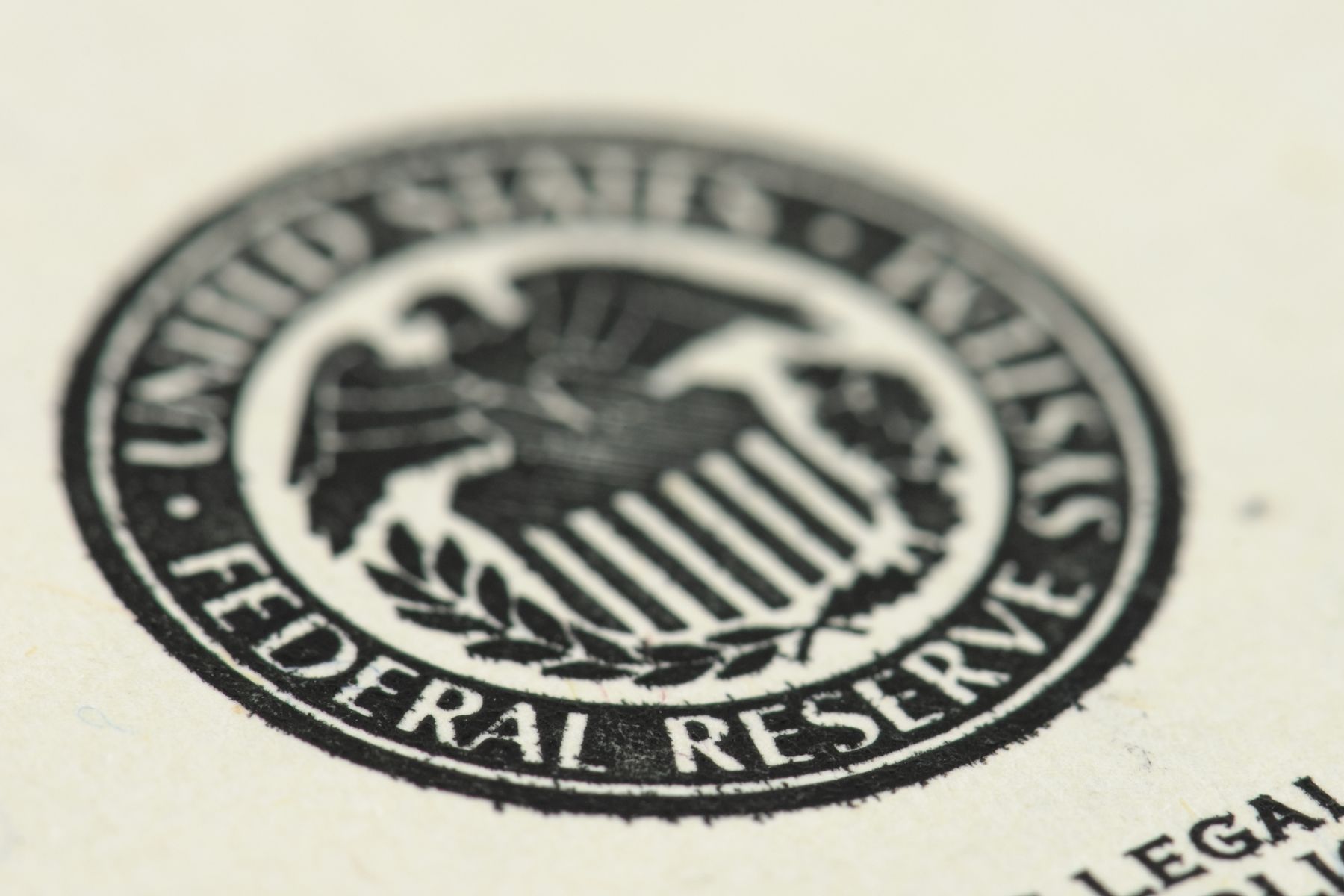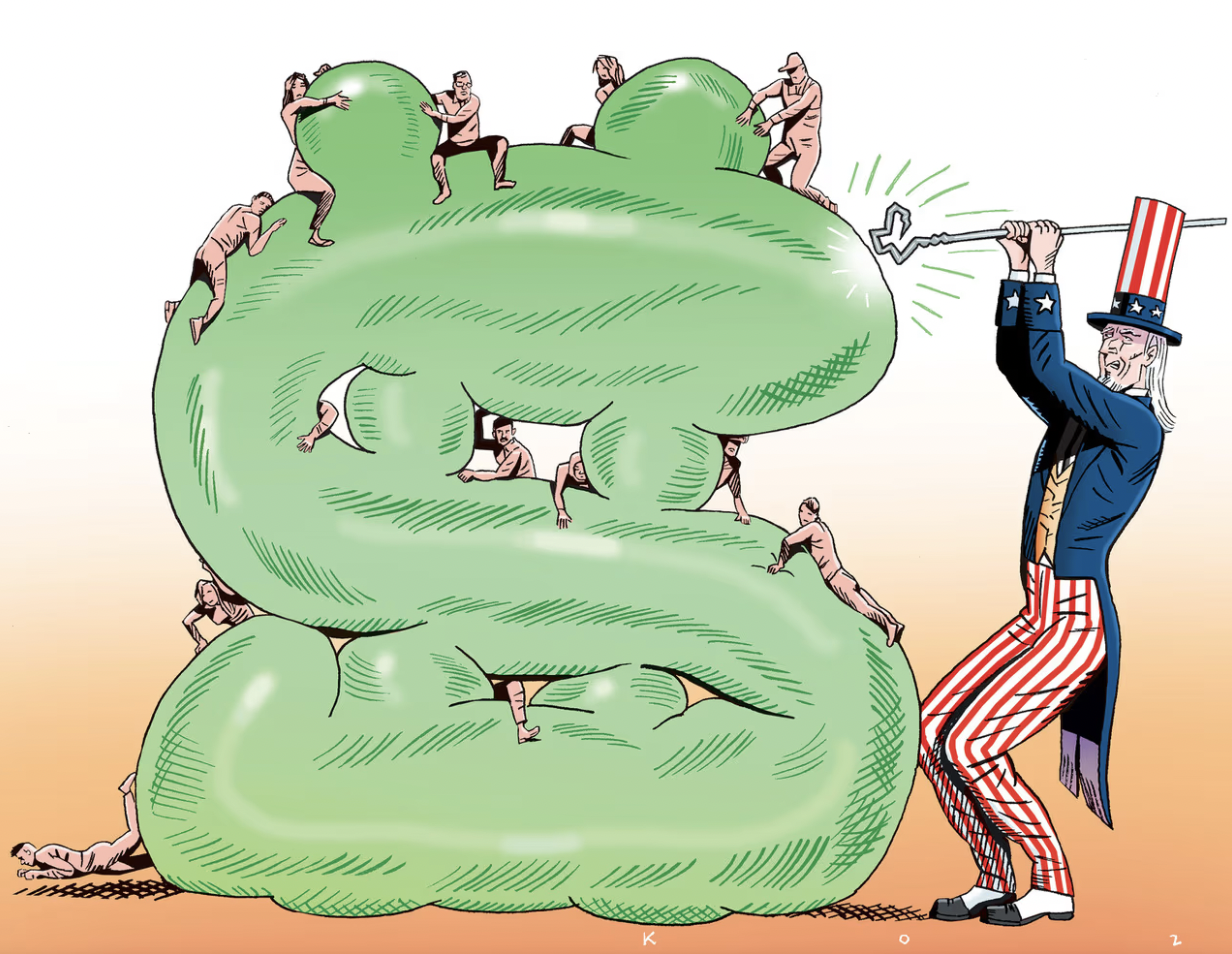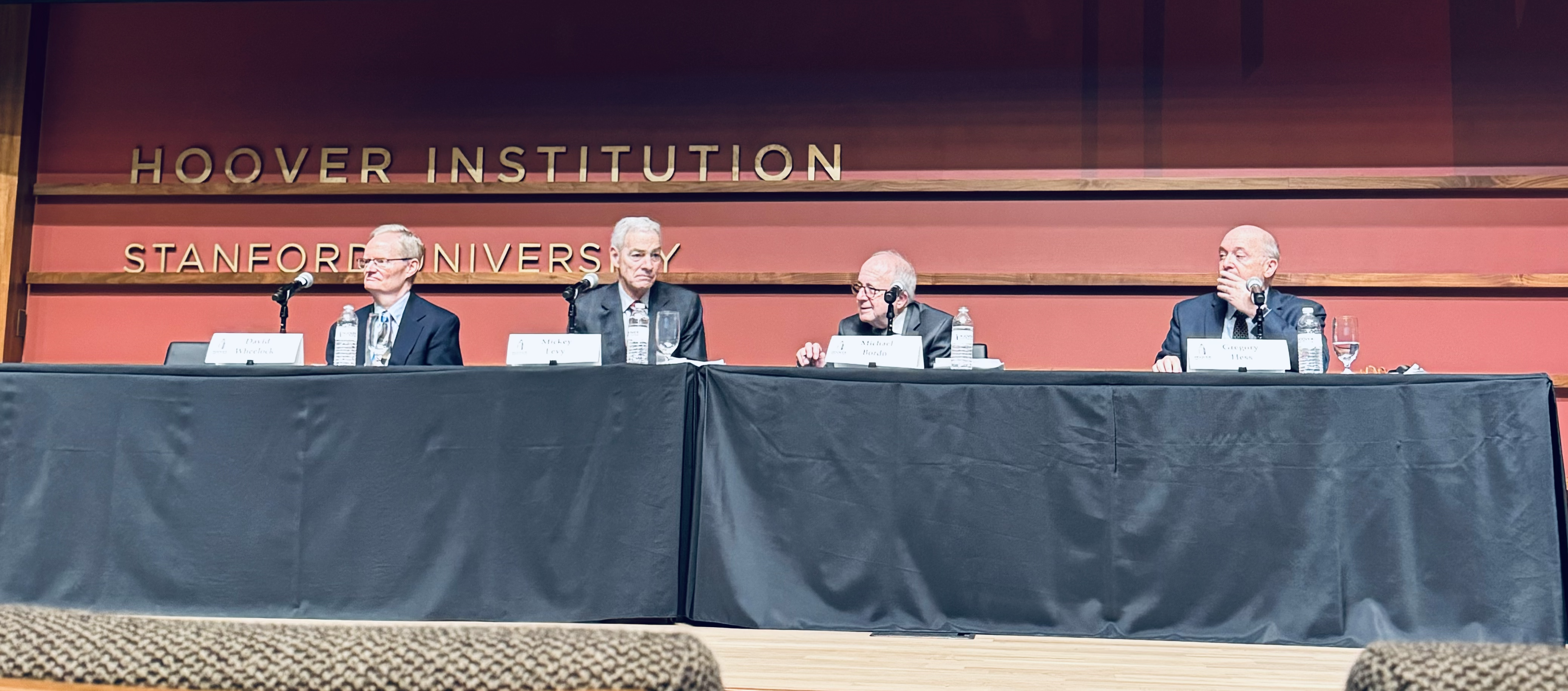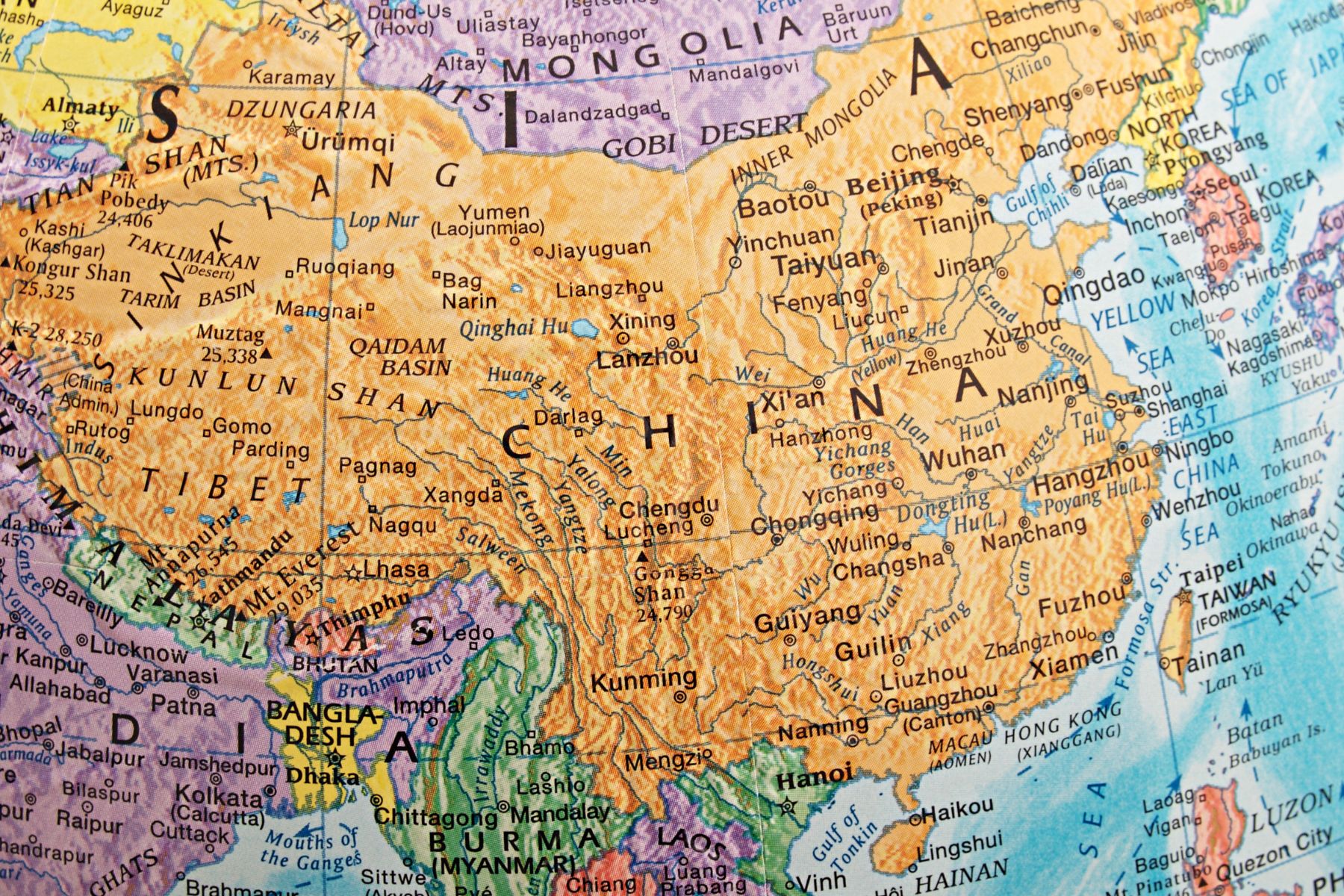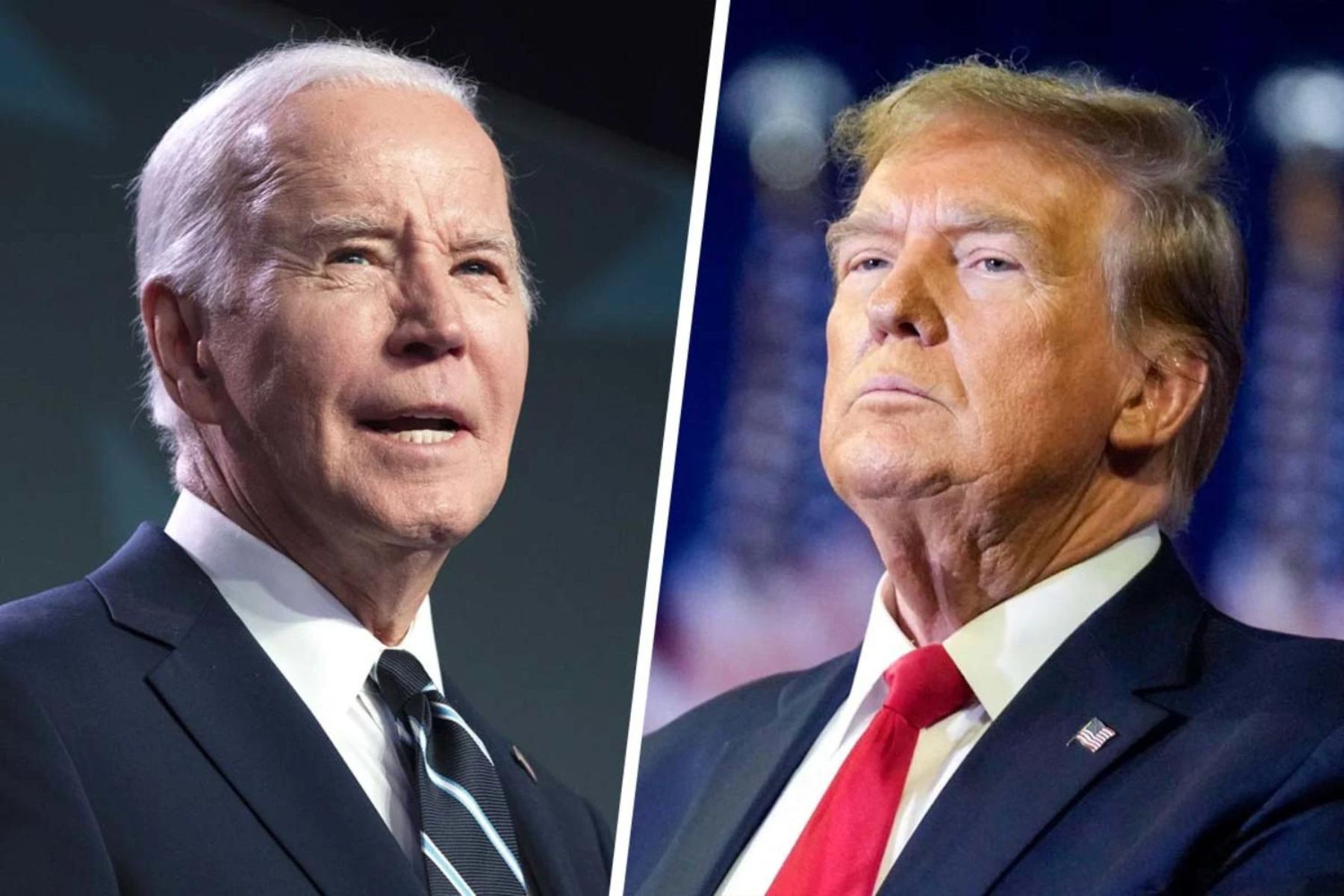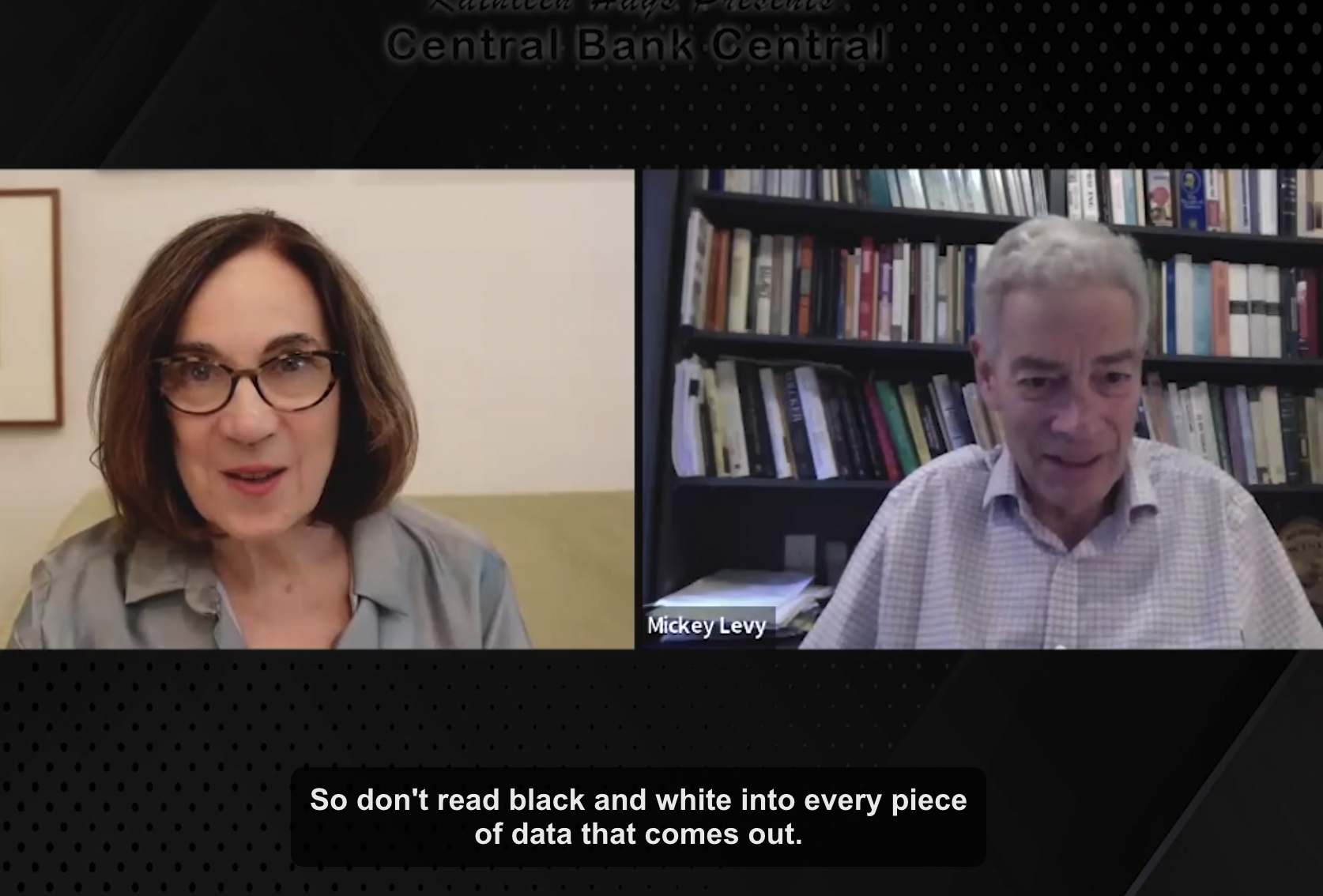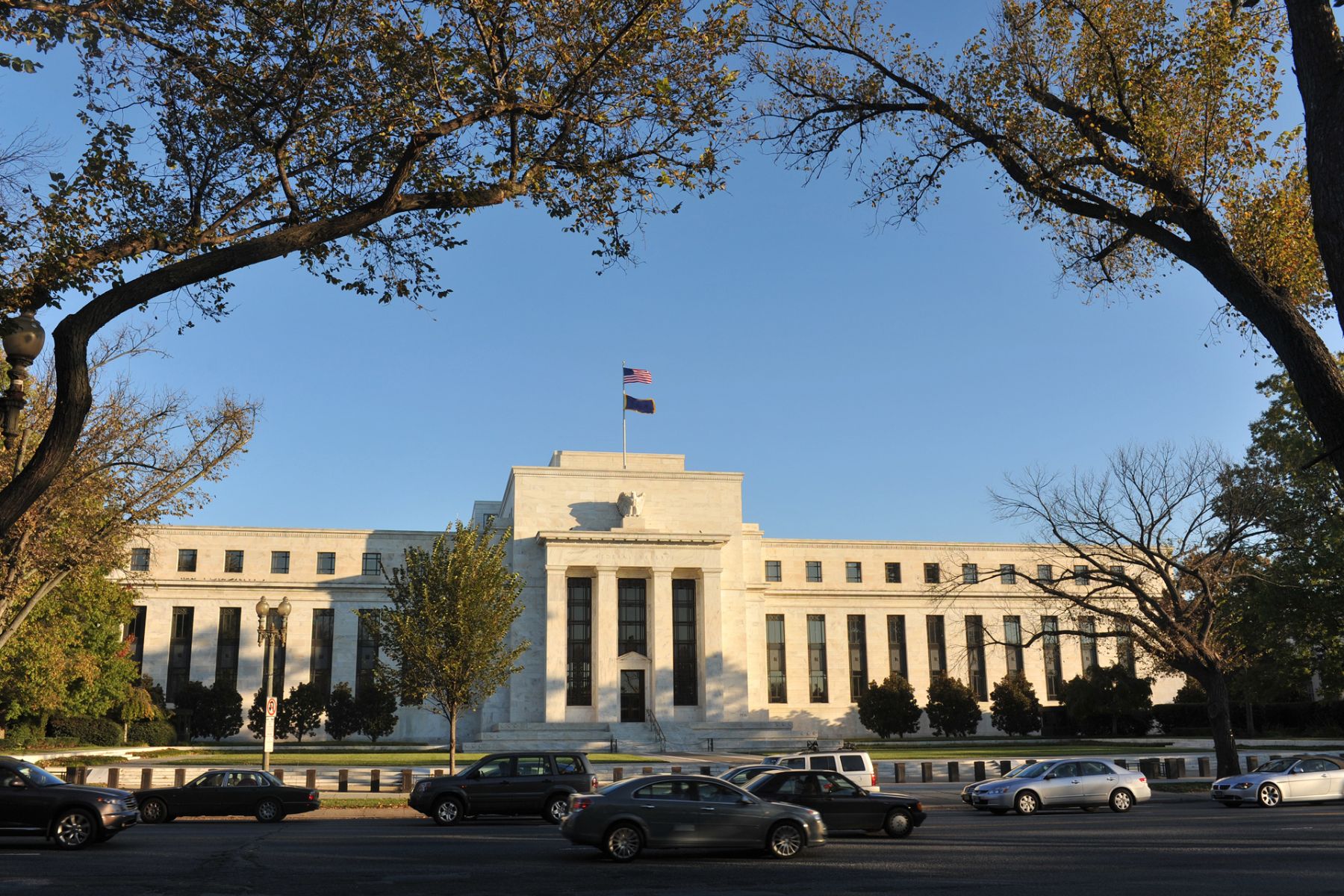China’s Stimulus Boosts Markets, but Expected Economic Impact Modest
China’s latest aggressive stimulus package has provided hope to financial markets, generating a stock market surge that partially retraces its sustained decline since early 2021, but it is unlikely to turn around China’s disappointing economy. China’s economic growth has been far weaker than its official GDP statistics suggest, as consumption and domestic demand have struggled following the predictable collapse in real estate. China’s economy is expected to continue to struggle. In reports in recent years, I have described the transition of China’s economic structure and its government-generated excesses in real estate, and warned that its adjustments would dampen its economy for years to come. Everything is unfolding as predicted.
The negative wealth effect on consumption is most likely to persist for several more years, as households must save more and spend less to replenish their balance sheets that were hammered by the collapse in housing. Loss of household and business confidence is weighing on economic activity. At the same time, China’s export-related manufacturing sectors are under pressure. Outside of strong demand for EVs and some manufactured goods, overall global demand for China’s goods has diminished and foreign nations and companies have reduced their supply chain exposure to China. China’s exports have been relatively flat in the last two years. Its sizable increase in exports to Russia has been largely offset by lower exports to western nations. Imports have also been relatively flat, reflecting the weaker consumption and domestic demand. These trends in export-related manufacturing sectors have dented employment and wages.
China remains an economic powerhouse and is the second biggest economy in the world and still the largest global hub of manufacturing and trade. However, its longer-run economic prospects will remain decidedly downbeat as long as President Xi’s authoritarian rule persists and clamps down on free enterprise. Such central-control economic systems are prone to misallocating national resources, posing barriers to capital flows and constraining advances in productivity.
China’s boom.
From the 1990s through roughly 2015, economic growth boomed as Chinese leadership allowed U.S. free enterprise alongside its centrally controlled economy. Huge inflows of foreign capital (financial, physical, and human) helped to ramp up the productive output and productivity of China’s enormous pool of low-cost labor to become the world leader in export-related manufacturing. Revenues from exports were wisely allocated into building productivity-enhancing modern infrastructure. Living standards and society advanced dramatically. China grew from a poor third world country to become the driver of global growth and trade, and the world’s second biggest economy. With its successes came higher wages and sharply rising costs of production. This generated a gradually slowing of potential growth, a natural phenomenon among advancing nations.
The shift in economic regime.
President Xi assumed leadership in 2012 (first as Prime Minister), and quickly reverted to his Chinese socialist roots and began clamping down on free enterprise. Economic historians who look back on this major inflection point in China’s modern history debate whether Xi believed the robust growth would continue under his socialist regime, or whether he was willing to trade growth for central control and power. My assessment is he presumed that China’s strong growth would persist and the imposition of his socialist ideals would generate favorable economic performance. His poor assessment failed to learn from the histories of centrally controlled economic regimes.
Excessively high GDP growth targets.
China’s slowdown in potential growth, a natural consequence of China’s economy growing toward its productive capacity and operating costs rising relative to global levels, was accentuated by the gradual tightening controls of capital flows, production, regulations on global joint ventures, and increased allocations of capital into state-owned enterprises (SOEs). Of note, the government began clamping down on the large and highly innovative and productive social media companies because their platforms had become a threat to the government — they facilitated free thinking and communications that was antithetical with Chinese socialist ideals, and their size and influences had become a threat to the Chinese government. This adversely affected foreign capital inflows and joint ventures with foreign companies, and the exchange of knowhow and technology. Foreigners had become tired and wary of China’s unsavory business and trade practices which accentuated these trends.
China’s central planners targeted GDP growth too high and generated real estate excesses in their efforts to achieve them. As potential growth moderated, Beijing established unrealistically high GDP targets. Achieving them proved to be a classical error that led to the misallocations of resources and was the source of its excesses in real estate. Their widely announced plan (beginning in 2015) to transition from reliance on exports to domestic consumption and services didn’t unfold, and growth began to fall short of GDP targets. The government filled the gap and met the GDP targets by ramping up investment spending. Some of the investment was for infrastructure but a sizable portion involved investing heavily in real estate. Local governments, which play a heavy role in China’s fiscal policies, achieved their contributions to the GDP targets given to them by Beijing by selling land to property developers, providing significant leverage (directly and through Local Government Financing Vehicles, LGFVs) and direct investment. Real estate and economic activity flourished year-after-year. Under the surface of the high GDP growth, the misallocations of national resources and excesses in housing and debt created excesses in debt. (The LGFVs were revealed as effective shells for hiding the mounting government debt).
The real estate boom greatly lifted economic activity and wealth. Global observers (including Wall Street economists) marveled and took for granted China’s ability to achieve such high sustained GDP growth. But they failed to look under the surface and scrutinize the mounting misallocation of resources and what they would lead to. China’s investment remained in excess of 40% of GDP year-after-year, nearly double other nations, while domestic consumption remained soft. China’s National Bureau of Statistics (NBS) does not disaggregate the investment data and show separately government and private investment, but it’s clear that most of the excessive investment spending was in real estate that provided low (negative) rates of return.
Everything worked well as long as expectations of home prices remained positive, which supported more demand for housing and debt. People and businesses like it when the value of their real estate goes up, and it increases their propensity to spend. But the mounting excesses in the supply of housing relative to demand, and growing debt and debt service costs of China’s land developers and local governments finally led to a shift in expectations. Skeptical citizens stopped buying new (and partially built) homes. A sharp decline in housing demand accentuated the dramatic excesses in supply and generated a collapse in real estate finances. China’s reversal and subsequent adjustments to the excesses in real estate have had many similarities to the bursting of Japan’s bubble in housing and asset prices in the late 1980s and the U.S.’s adjustments following its debt-financed housing bubble of the early 2000s.
Real estate had become a key driver of China’s economy. Some estimates put real estate activity at its peak over 25% of GDP and as much as 75% of household net worth, multiples higher than in the U.S. and other advanced nations (Rogoff and Yang, “Rethinking China’s Growth”, 2023). When the real estate sector collapsed, it undercut two vital factors that had been driving the economy: 1) consumer finances and spending and 2) local government finances, which had relied heavily on revenues from land sales to developers.
The negative wealth effect.
The large hit to household net worth has lowered the propensity to spend, as households must save more to replenish their balance sheets. This further delays the plans and hopes of China’s leaders for a transition in the economy from exports to consumption. Ongoing declines of real estate values and clear evidence of the excesses — Chinese citizens now see half built and empty apartment complexes rather than building cranes and the read about government bailouts of the bankrupt land developers — reinforce negative expectations of home prices and reduce demand for housing. This will elongate the negative impact on consumption.
The experiences in Japan and the U.S. following their housing and asset price bubbles suggest that the negative wealth effect will constrain China’s consumption for several more years. Japan’s 75% decline in housing values and the Nikkei following their late-1980s boom (that was generated by the BoJ’s efforts to pump up the economy) led to the “lost decade of the 1990s” of soft growth marked with several recessions and on-and-off mild deflation. Of note, however, Japan’s government and Bank of Japan were very slow to address the problems and insolvencies of large Japanese banks, and finally recapitalized the largest banks and insurance companies in 1997. The BoJ’s policy interest rate was reduced from 6% in 1990 to 0% in the late 1990s. The recapitalization was financed by government issuance of bonds that involved soaring debt. It took 34 years for the Nikkei to regain its December 1989 high.
The negative wealth effect in the U.S. that resulted from the collapse of the debt-financed housing bubble of the early 2000s — during the financial crisis, household net worth fell sharply, reflecting the 40%+ declines in both home prices and the S&P500 — contributed to the slow recovery of consumption and the economy, despite the Fed’s zero interest rates and quantitative easing that suppressed bond yields, and the 2009 fiscal stimulus. Despite these stimulative efforts along with private banks writing off nearly all home equity loans, the damage to the economy resonated for years. Real GDP regained its earlier 2007Q4 peak in 2011Q3 and new and existing home sales still remain well below their 2006 peaks. The Case Shiller Home Price Index that peaked in late 2007 through early 2012 and finally regained its prior peak in late 2016.
Government finances.
The sharp curtailment of new construction has reduced local government land sales to developers and undercut a major source of revenues. This has revealed the fragile local government finances and their high indebtedness and undercapitalization of LGFVs. This has constrained the central government’s capacity to stimulate the economy. Lacking demand, there has been a collapse in sales of land to developers. The fall in housing construction has been a negative for government finances, economic activity and jobs. Beijing has rolled out a series of modest stimulus packages, hoping they would stabilize housing and buoy the consumer. However, they have been insufficient to stabilize the decline in real estate values and activity and offset the negative wealth effect. The government faces a sizable challenge: estimates of empty and partially build apartments in China are around 90 million units. That’s a staggering imbalance that will take years (and probably much more government deficit spending and debt) to work down to manageable levels.
With the current sizable stimulus package, the national government has signaled that will incur large deficits and borrow heavily to support housing, reduce the costs of consumer debt and provide financing support to local governments.
The impact of the stimulus.
The package has provided a big boost to China’s financial markets, with stocks up sizably. Whether the announcement proves to be a credible “Draghi moment” — “whatever it takes” Euro rescue moment — remains uncertain, reflecting the unreliability and unpredictability of China’s leaders. But its magnitude is decidedly insufficient to materially reduce the enormous overhang of excess supply of housing or generate a sustained increase in consumer spending. While it provides financial incentive to purchase homes, housing excesses in supply will remain, as will expectations that home prices will fall further. The stimulus package does ease some debt service burdens, but most household balance sheets remain dominated by real estate and will continue to suffer from the earlier declines in household net worth. Accordingly, the need to save will remain high, squeezing consumer spending.
The Peoples Bank of China’s lower interest rates and cuts in bank reserve requirements (by 50 basis points) will ease the debt-service costs of existing homeowners and have some marginal positive impact on lending. However, demand for loans is weak. The PBoC is also reducing the borrowing costs for existing mortgage holders and lowering the minimum down-payment on new home purchases to 15% from 25%. These will modestly reduce the debt service costs on current homeowners and encourage new home purchases. But this will not materially narrow the supply-demand imbalance in housing. The PBoC will cover 100% of the loans for local governments to buy unsold homes with cheap funding. Effectively, the central bank will make cheap loans to local governments to buy unsold homes and take them off the market. This “warehousing” of unsold homes only shifts the holdings of the excess supplies and postpones the necessary adjustments.
This stimulus package acknowledges China’s languishing economy and reflects the willingness of the government to deficit spend more and incur rising debt to resolve the problem, but the excesses the government created will continue to weigh heavily on consumption and domestic demand.
A Comparison of the Biden and Trump Economic Platforms
This brief provides a side-by-side comparison of the economic platforms of President Biden and former President Trump. It considers policy proposals on taxes and spending, tariffs, regulations, immigration, climate, energy, and considers treatment of the Federal Reserve. The proposals are sourced from the official campaign websites and other official documents and statements of the candidates. It does not consider the economic effects of the two candidates’ proposals and does not address the personal characteristics of the candidates. Since 1992, I have prepared side-by-side comparisons of presidential candidates. More so than in many previous elections, Biden’s and Trump’s stances on select economic policies are not well defined.
Differences and a Few Similarities Between the Two Candidates’ Proposals
On key issues of taxes, spending, and the policies for business, energy, and the environment, the two candidates’ economic platforms present stark alternatives. President Biden’s economic platform is decidedly in the tradition of the Democratic Party, with proposals to increase spending and increase taxes for higher income and wealthier taxpayers, and anti-business provisions. Former President Trump’s proposals are more in the Republican Party mold of lower taxes and restrained spending and are generally more favorable toward business and energy production and negative on green and environmental issues. However, on issues like tariffs, immigration, and regulations, Trump’s platform is less in line with free enterprise Republican traditions. Rather, he pushes systems of central control.
On taxes, Biden proposes sizable tax increases for higher income taxpayers, including higher tax rates and taxes on interest and dividend income and unrealized capital gains of the wealthy, and tax subsidies (credits) for lower income households. Trump proposes to make the 2017 Tax Cuts and Jobs Act, which is set to expire in 2025, permanent, while Biden would allow most provisions of the Act to expire. Trump proposes modest reductions in the corporate tax rate, while Biden proposes increases in corporate taxes and minimum effective taxes on income from overseas and corporate tax rules consistent with OECD and G20 minimums.
On spending, both candidates explicitly state they would maintain the current structures and spending on Social Security and Medicare. Biden proposes a wide array of spending increases on social issues, while Trump has alluded to cutting spending on social issues but doesn’t specify any cuts. Biden proposes cuts in real defense spending in his Fiscal Year 2025 budget proposal, while Trump states the objectives of strengthening and modernizing defense but doesn’t provide any specific proposals or weigh in on defense spending implications.
Both Biden and Trump propose higher tariffs, with similar objectives, particularly on imports from China, although Trump’s proposals are more aggressive, based on his aversion to bilateral trade deficits with other nations.
On immigration, Trump proposes sharp cuts in immigration and has stated that he endorses the deportation of millions of undocumented immigrants, and a temporary “pausing” of Green Card grants for legal immigrants. Currently, the Biden platform is in flux, with new limitations imposed last month on immigrants.
Biden’s platform includes its recent climate and green agenda accomplished through regulations and tax credit subsidies and regulations that limit drilling. Trump is pro-fossil fuels and gas exploration, and anti-green and climate initiatives, but his platform does not provide specific proposals that would accomplish these objectives.
Both candidates say they will lower inflation. Biden proposes caps on select prices of pharmaceuticals and administrative efforts to lower corporate prices and fees. Trump does not provide specific proposals.
Regarding the Federal Reserve, both candidates favor low interest rate policies, but neither candidate’s platform includes any proposal that would affect the Fed’s conduct of monetary policy. Jerome Powell’s tenure as Fed Chair expires in Spring 2026, and the president will nominate Powell’s successor and any other Fed governors when the positions open. Biden’s short list for Fed Chair apparently includes noted doves Austen Goolsbee and Lael Brainard. Trump has been an outspoken critic of the Fed and his advisors have discussed the idea of blunting the independence of the Fed. It is highly uncertain how this would be accomplished.
Discussion of the Comparison
Several observations about the candidates’ economic platforms are important.
First, both President Biden’s and former President Trump’s platforms basically ignore the current and projected persistent budget deficits and mounting government debt. Both candidates are explicit in supporting the current Social Security and Medicare programs, two of the largest sources of mounting deficit spending and debt projections, while Biden proposes ongoing increases in spending and Trump recommends tax cuts. Based on the two platforms, neither candidate has the appetite for proposing meaningful deficit cutting legislation, so the prospects for meaningful reductions in projected deficits and debt seem slim.
Second, Congressional outcomes will have a large impact on the achieved economic policies of the next president. A Biden victory and Democratic control of both the House and Senate would likely result in sizable spending and tax increases, potentially including a “wealth tax.” A Trump victory and Republican sweep of Congress could potentially lead to jarring spending cuts and shifts in trade, immigration, and regulatory policies well outside of current expectations. Split powers presumably would mitigate against sharp shifts in economic policies that Congress can control.
Third, as presidents, both candidates have made extensive use of Executive Orders and regulations to implement desired policies on a wide array of issues, including international trade, labor, motor vehicles, corporate structure and mergers, and more. Both have used such executive powers to reinterpret rules and laws to achieve desired outcomes, and both have used Executive Orders and regulations to avoid Congressional debate and voting. A split in political powers — either between the executive branch and Congress, or between the House and the Senate — would likely lead to even more extensive use of such executive powers.
Fourth, recent history shows that while some presidents have successfully pursued the economic platforms spelled out during their election campaigns, others have not. Those that did: President Reagan (1980-1988), whose campaign emphasized pro-economic growth policies including tax cuts and a defense spending buildup; President Obama (2008-2016), who campaigned on economic redistribution (spending increases on social issues and higher taxes on high income taxpayers) and receding U.S. foreign influences. Those that didn’t: President Bush (1988-1992) who raised taxes after campaigning against them (read my lips: no new taxes); President Clinton (1992-2000), who supported NAFTA and welfare reform after campaigning strongly against them; and President George W. Bush, who passed significant spending increases, and following 9/11, led the U.S. to become the world’s policeman, after campaigning as a fiscal conservative and international isolationist. As presidents, both Trump and Biden pursued the major themes of their economic platforms when they were in office. Trump’s economic platform in 2016 focused on tax cuts and high tariffs, and anti-China policies; and President Biden’s 2020 campaign emphasized more spending for social issues and green initiatives and higher taxes on high income taxpayers and redistribution and pro-labor initiatives. It’s impossible to know what the next administration will bring, but based on precedent, we can anticipate that these two candidates will attempt to pursue their platforms if they are elected.
Biden-Trump Platform Comparison Summary
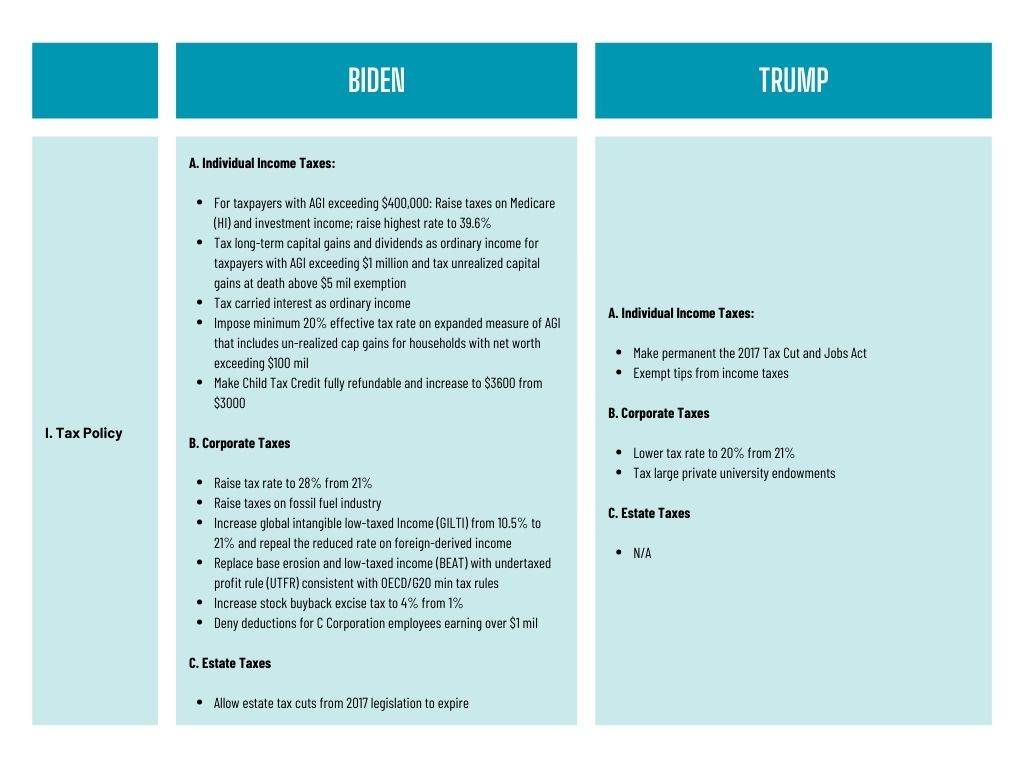
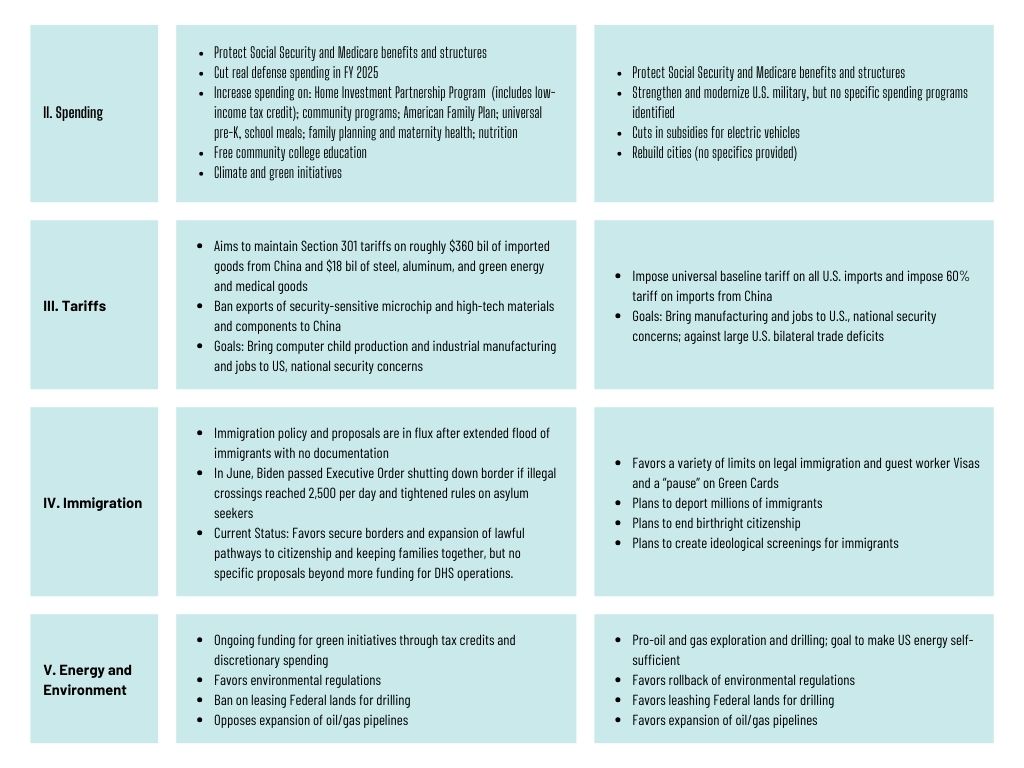
Levy: Fed's System of Estimating and Communicating Dots Needs Changes
At the conclusion of its FOMC meeting this Wednesday, the Fed will release its quarterly Summary of Economic Projections (SEPs). In this podcast episode of Central Bank Central, Kathleen Hays and I discussed expected changes in the Fed's projections, the history of the SEPs, and common misperceptions. Based on a recent paper co-authored with Charles Plosser, former President of the Federal Reserve Bank of Philadelphia, and presented to the Hoover Monetary Policy Conference ("The Fed's Strategic Approach to Monetary Policy Needs a Reboot", May 2-3, 2024) and last week's related Wall Street Journal Commentary ("What the Fed Doesn't Communicate, June 6, 2024), I provide suggestions for how the Fed should modify and improve the SEPs.
Japan’s Economy, the Yen, and the Bank of Japan
Thesis: The Bank of Japan’s policy of zero interest rates and ongoing asset purchases is contributing to a weak yen and harming Japan's economy. Raising the BoJ’s policy rate toward its 2% target would contribute to an appreciation of the yen and boost the consumer and the economy. The BoJ’s policy rate has been zero or slightly negative for years and its massive asset purchases continue to balloon its balance sheet. This has served to distort financial markets but has not stimulated economic activity. The BoJ’s policy rate is now more than 2 percentage points below inflation. In other advanced nations, a rise in the central bank policy rate involves tighter monetary policy that weakens domestic demand. In Japan, following many years of zero or negative rates and asset purchases, normalizing monetary policy would enhance economic performance.
Japan's economy has struggled in the last year. Private consumption and gross business capital formation have each fallen in the last four consecutive quarters, reducing domestic demand (Chart 1). 2024Q1 was notably weak, with a 2% annualized decline in real GDP. Earnings have fallen behind inflation, cutting into purchasing power (Chart 2).
Chart 1. Japan Domestic Demand Chart 2. Earnings and Inflation
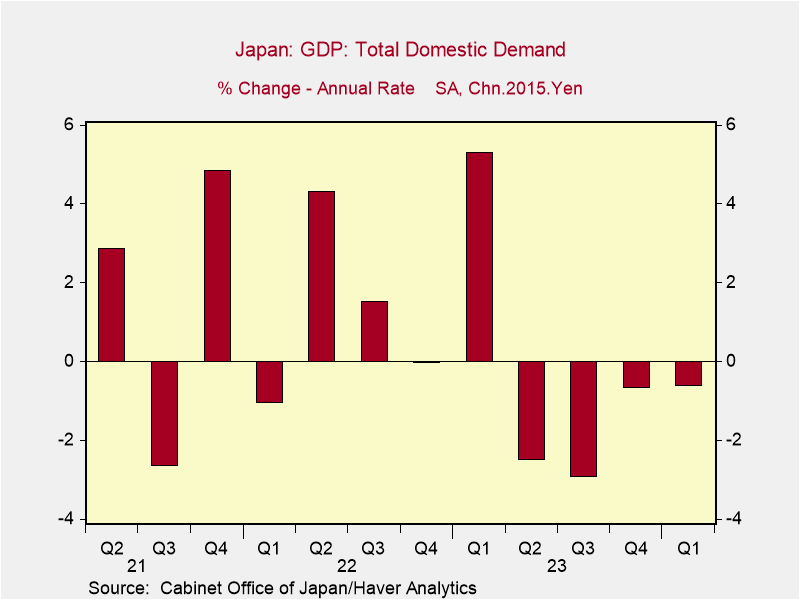
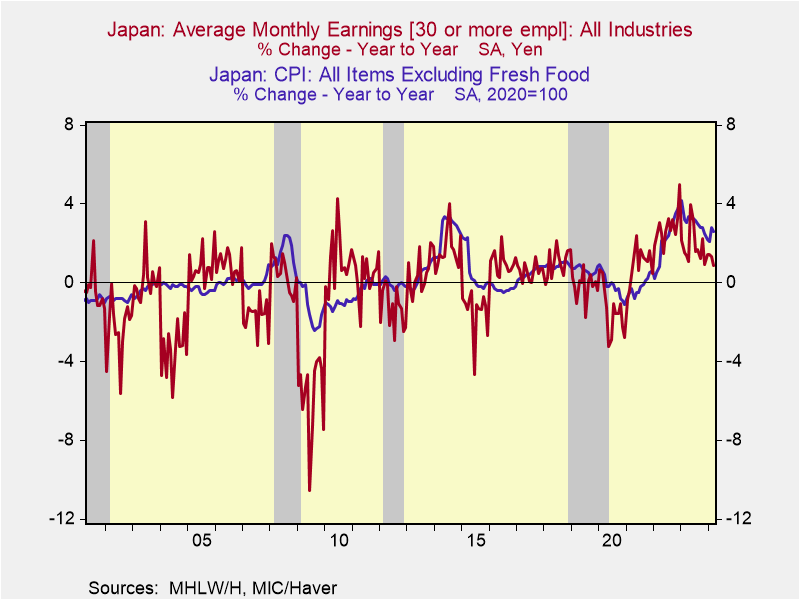
The BoJ's persistent zero (or slightly negative) interest rates have failed to stimulate aggregate demand and have served mostly to suppress debt service costs (including the government's) and distort financial markets and economic decisions. The BoJ's bloated balance sheet (its assets and liabilities) is dramatically higher as a percent of GDP than the Fed’s or ECB’s and magnitudes higher that any measure of reasonableness (Chart 3). Its asset purchases have created excess reserves in the banking system, the largest portion which are loaned back to the BoJ. The BoJ officially pays interest on excess reserves, which is tied to the BoJ’s policy rate and thus until recently has been zero. Commercial banks pay close to zero yields on deposits and generally have set rates on mortgages and consumer loans that provide positive returns to banks. Consumers lose from the BoJ’s policies.
Chart 3. The BoJ’s Balance Sheet/GDP Chart 4. The BoJ’s Policy Rate and Inflation
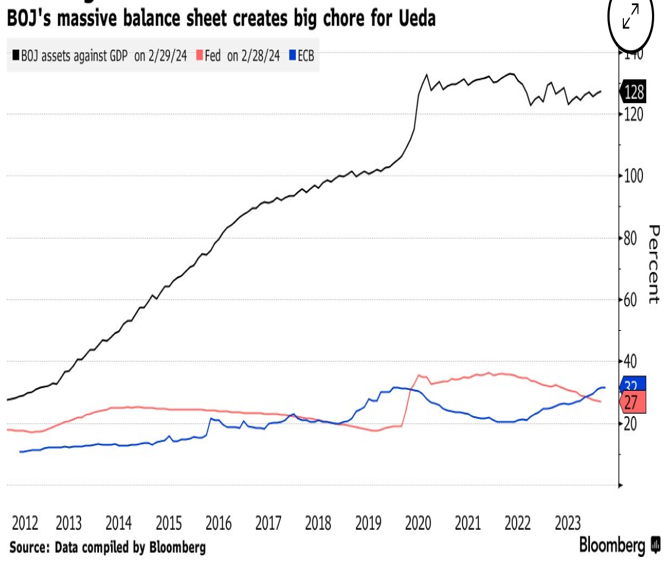
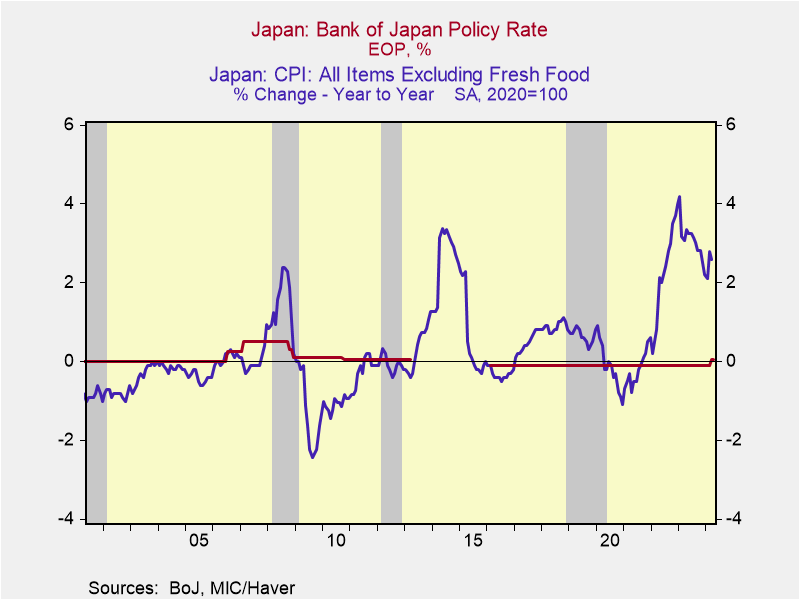
The divergent policies of the BoJ and the Fed have contributed to the marked weakness of the yen. In particular, the yen depreciated as the Fed raised rates in 2022 while the BoJ maintained a slightly negative real policy rate and its forward guidance suggested no future change. Even as the BoJ eased its yield curve control program, which allowed JGB yields to rise, the BoJ continued its asset purchases and the yen depreciation continued. Presently, the BoJ’s policy rate is more than 2 percentage points below inflation while the Fed’s policy rate (5.25%-5.5%) is roughly 2.5 percentage points above PCE inflation. Ex ante real JGBs are well below real US Treasury yields, although the comparison is clouded by the wide range of measures of Japanese inflationary expectations.10-year JGB yields have risen close 1% but inflationary expectations vary widely among different surveys and market-based measures. BoJ Governor Kazuo Ueda has indicated that longer-run inflation expectations are around 1.5%. 10-year Treasury bond yields of 4.5% are roughly 2 percentage points above inflationary expectations of 2.5%.
Chart 5. The Yen and Fed Funds Rate minus BoJ Rate
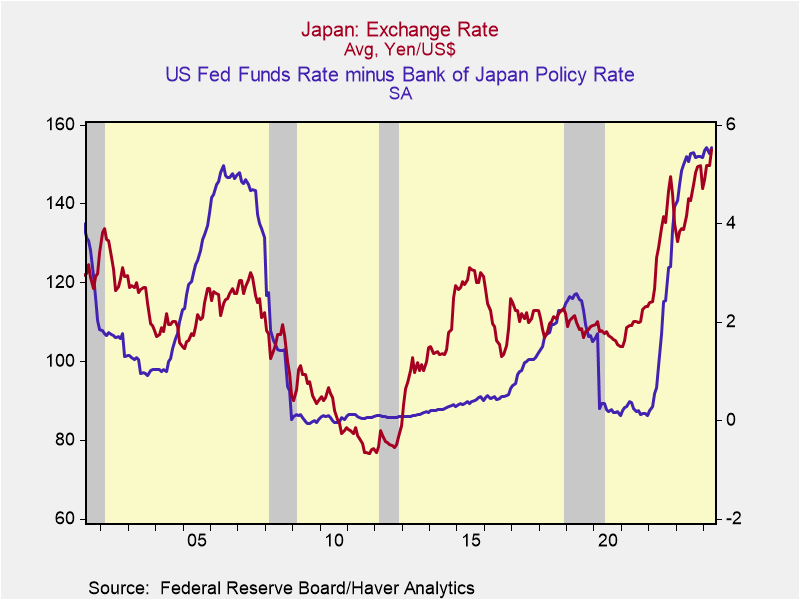
The weaker yen has benefited exporters by lowering their costs of production relative to overseas producers, but has raised the costs of imports. Japan's imports are a relatively high 18% of GDP. Japan imports nearly 100% of its oil and energy whose transactions are primarily US dollar-denominated. Prices of imported goods have risen dramatically: Chart 6 shows the cumulative price increases of goods that are consumer-oriented and Chart 7 shows cumulative price increases of goods used in production. Prices of oil and energy imports are included in Chart 6, but they affect production just as much. These high prices of imports have dented consumption and production, and they have also weighed on confidence.
Charts 6 and 7. Prices of Imported Goods, Consumer and Production-Related
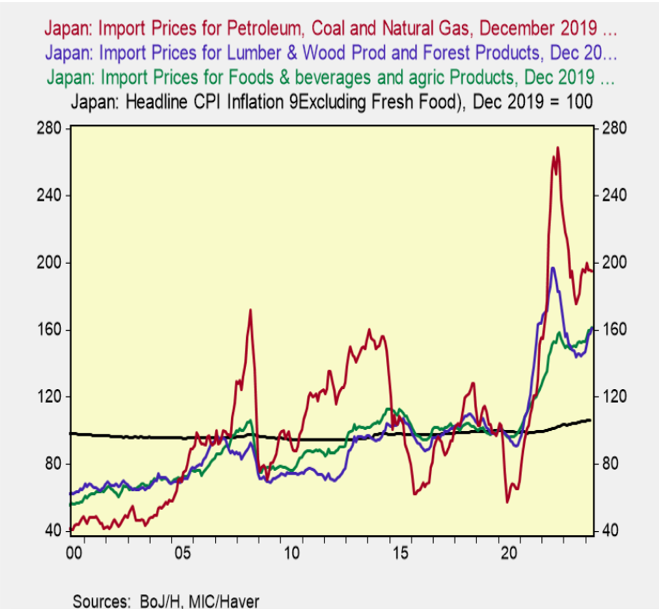
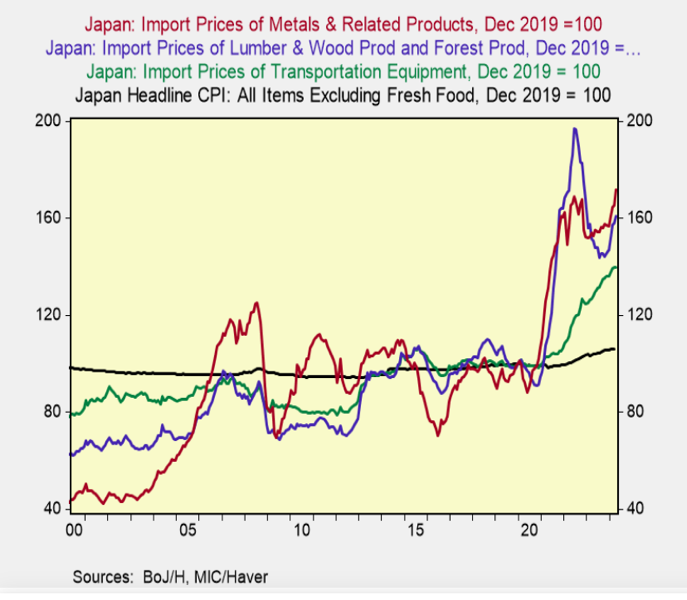
Based on the higher inflation and rising inflationary expectations, and the burdens the weaker yen is imposing on Japan’s economy, the BoJ would be wise to raise its policy rate toward its 2% target and provide forward guidance that its intention is to normalize monetary policy. This would involve raising rates and implementing a gradual program of reducing its balance sheet. While the rate increases should begin immediately and continue through year-end 2025, the balance sheet adjustment necessarily must be slower. There are currently close to 3 trillion yen in excess reserves, and the BoJ holds large amounts of long-duration assets, including corporate bonds, and it also holds ETFs of equities, so a gradual unwind of the balance sheet would likely involve a 10-year program.
As the BoJ raises interest rates, commercial banks will profit from the sizable interest they receive from the BoJ on excess reserves. The steepening of the yield curve and higher interest margins will facilitate higher bank yields on deposits. Japanese pensions, including those managed by the Postal Saving System, and insurance companies will benefit. Consumers will be better off. It will take years to judiciously unwind the excess reserves in the banking system, such that bank lending is unlikely to be inhibited. The BoJ understands the negative impact of the weak yen on Japanese consumers and the economy. It’s only a matter of time before it raises rates.
Confidence will build as evidence shows economic improvement as the BoJ increases rates toward inflation and the yen appreciates. This will reinforce the yen and the domestic economy. The marked appreciation of the Nikkei has already begun to anticipate these favorable outcomes.
